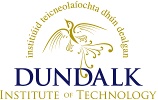Lim, Xin Rui (2022) Inward currents in mouse corpus cavernosum smooth muscle cells. Doctoral thesis, Dundalk Institute of Technology.
|
PDF (PhD Thesis by Xin Rui Lim)
- Accepted Version
Download (6MB) |
Abstract
Tonic contraction of CCSM is a pivotal component of the erectile dysfunction mechanism. Numerous studies have suggested that the penile contractile tone is regulated by its membrane potential. However, the precise expression and functional contributions of ion channels in corpus cavernosum smooth muscle of the mouse species have yet to be fully ascertained. Whole cell ruptured patch and perforated patch technique revealed the presence of 1) voltage-gated sodium channels and 2) Ca2+ -activated Cl- channels, respectively, in freshly dispersed mouse CCSM cells. Pharmacology studies revealed 2 populations of sodium currents, where TTX-insensitive current was mediated by NaV1.5, and TTX-sensitive current was mediated by a mixture of subtypes. Immunocytochemistry studies confirmed the presence of NaV1.4, NaV1.5, and TMEM16A. Steady-state activation and inactivation curves revealed a small NaV window current at the resting membrane potential. Veratridine, a NaV activator, reduced time-dependent inactivation of the current and increased the duration of evoked action potentials. In CCSM tissue, veratridine-induced phasic contractions were a result of direct membrane depolarisation by sustained Na2+ - influx, hence activating L-type Ca2+ current to cause contractions. Phenylephrine induced phasic contractions of intact corpus cavernosum muscle strips were inhibited by NaV and CaCC antagonists, highlighting the importance of these ion channels in the regulation of contractility by the sympathetic nerves. CCSM cells exhibited spontaneous transient inward currents and spontaneous transient depolarisations when voltage-clamped at -60 mV, and in current clamp mode, respectively. STICs were carried by Cl- ions. Both STICs and STDs involved Ca2+ -activated Cl- channels. They were dependent on Ca2+ release from intracellular Ca2+ stores involving RyR and IP3R and were also reliant on store- operated calcium entry. L-type Ca2+ currents contributed to the plateau of STDs. This study suggests that contraction of CCSM is regulated by activation of NaV channels and TMEM16A channels and therefore inhibition of these channels could lead to penile erection.
| Item Type: | Thesis (Doctoral) |
|---|---|
| Uncontrolled Keywords: | Corpus Cavernosum, Smooth muscle, sodium channls, Nav1.5, TMEM16A, Ca2+ imaging, patch clamping, isometric tension |
| Subjects: | Science > Biology |
| Research Centres: | UNSPECIFIED |
| Depositing User: | Keith Thornbury |
| Date Deposited: | 08 May 2025 12:59 |
| Last Modified: | 08 May 2025 12:59 |
| URI: | https://eprints.dkit.ie/id/eprint/925 |
Actions (login required)
 |
View Item |
Downloads
Downloads per month over past year

